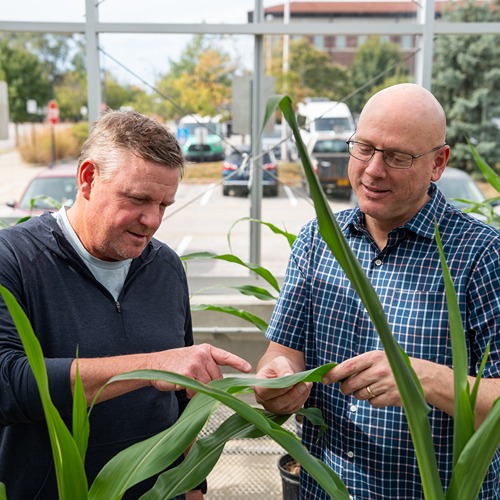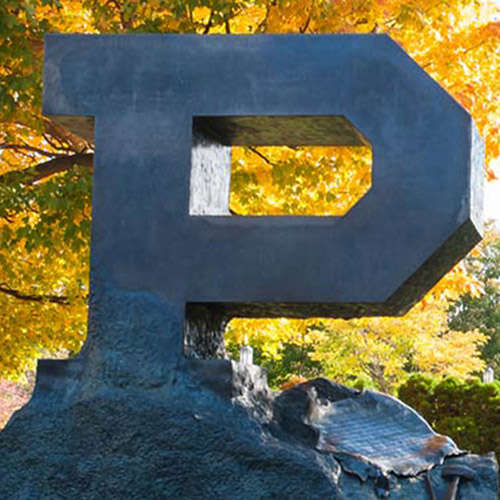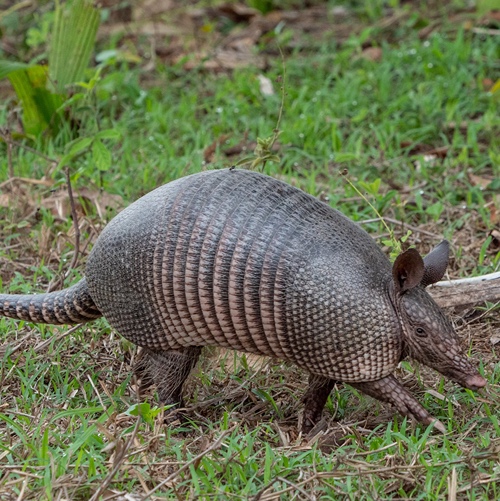Intro to Trees of Indiana: Bitternut Hickory
The classic and trusted book "Fifty Common Trees of Indiana" by T.E. Shaw was published in 1956 as a user-friendly guide to local species. Nearly 70 years later, the publication has been updated through a joint effort by the Purdue Department of Forestry and Natural Resources, Indiana 4-H, and the Indiana Department of Natural Resources, and reintroduced as "An Introduction to Trees of Indiana."
A printed copy of the full publication is available for purchase for $7 in the Purdue Extension Education Store. The field guide helps identify common Indiana woodlot trees.
Each week, the Intro to Trees of Indiana web series will offer a sneak peek at one species from the book, paired with an ID That Tree video from Purdue Extension forester Lenny Farlee to help visualize each species as it stands in the woods. Threats to species health as well as also insight into the wood provided by the species, will be provided through additional resources as well as the Hardwoods of the Central Midwest exhibit of the Purdue Arboretum, if available.
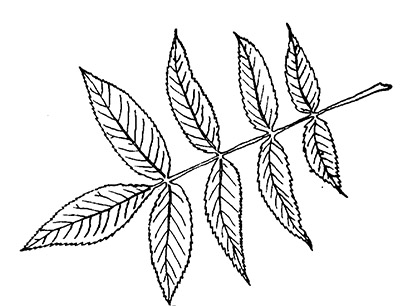 This week, we introduce the bitternut hickory or Carya cordiformis.
This week, we introduce the bitternut hickory or Carya cordiformis.
This cousin of the pecan, has anywhere from five to 11 leaflets, commonly seven to nine, on each alternately held compound leaf. Leaflets are much longer than they are wide and are often curved backwards.
A sulphur-colored, elongated bud is a standout identifying characteristic. Bitternut hickory has tight light to silvery gray bark with interlacing ridges throughout the life of the tree.
The fruit is a light colored, small, round nut, with a thick hull and a slight wing where the sutures meet. It is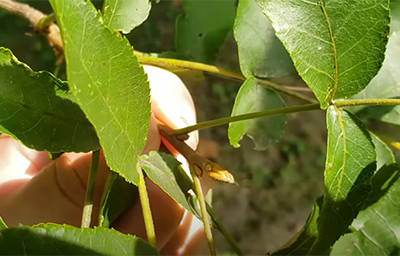 quite bitter and not preferred by animals or humans.
quite bitter and not preferred by animals or humans.
The bitternut hickory is one of the fastest growing hickory species in the state behind the pecan, and produces some fall beauty with yellow and gold foliage. Bitternut hickory, one of the most abundant and wide spread hickory species, can be found on dry gravelly uplands as well as rich moist bottomland from the Atlantic coast to the Great Plains, north through Minnesota and the St. Lawrence River valley, except the gulf coastal plains and the lower Mississippi flood plain regions.
According to the Hardwood and Lumber Veneer series, hickories are broken up into two groups based on the number of leaflets on each leaf. The first group, the true hickories, include shagbark, shellbark, mockernut and pignut varieties. The second group, called the pecan group, includes true pecan and bitternut hickory.
Hickory is used in the kitchen cabinet industry as well as to make flooring and furniture. Products made from hickory are often marketed as pecan, regardless of the species used. Because of its hardness, strength, toughness and resiliency, hickory can be used to make tool handles, such as sledge hammers, axes, picks and hammers, due to its ability to withstand the impact that occurs with these tools. Hickory is also used to make ladder rungs, wheel spokes, drumsticks, skies, golf club shafts and gymnastics bars. It is also prized for smoking meats, making skewers and for use as a fuel wood due to its high density.
Pecan hickories have a density of 46 pounds per square foot, while true hickories range from 50 to 78 pounds per square foot. Hickory is rated is one of the better woods for bending and is an excellent wood for boring. According to the Wood Database, hickory is among the hardest and strongest of woods native to the United States.
Other Resources:
Hickory and Pecan Species in the Hardwood Lumber and Veneer Series, The Education Store, Purdue Extension's resource center
Sustaining Our Oak-Hickory Forests - Hardwood Ecosystem Experiment, The Education Store
The Hardwood Ecosystem Experiment: 2006-2016, The Education Store
Indiana Forestry and Wildlife: The Hardwood Ecosystem Experiment, The Education Store
Purdue Plant Doctor
Native Trees of the Midwest, The Education Store
Shrubs and Woody Vines of Indiana and the Midwest, The Education Store
Investing in Indiana Woodlands, The Education Store
Forest Improvement Handbook, The Education Store
ID That Tree, Purdue Extension-Forestry & Natural Resources (FNR) YouTube playlist
Woodland Management Moment , Purdue Extension-FNR YouTube playlist



